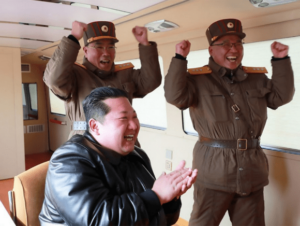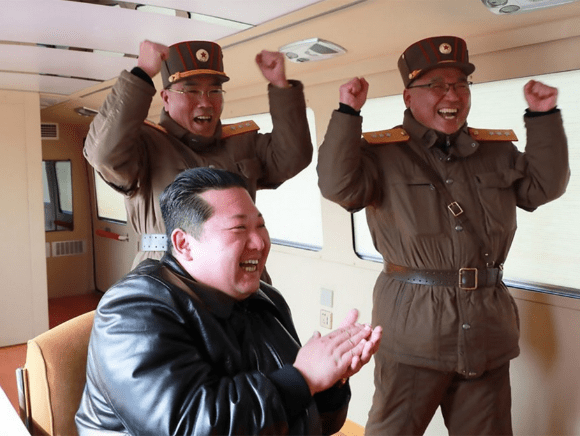Amid an unprecedented fusillade of long-, medium-, and short-range missile testing recently, the dictator of North Korea, Kim Jong Un, claimed on Friday, March 24 to have tested a nuclear warhead-capable unmanned underwater vehicle (UUV). Kim has threatened nuclear responses in the past, and this announcement appears to be similar in tone. Though the test used a conventional warhead, according to North Korean news sources, the UUV is designed to carry a nuclear weapon.
There is no irrefutable evidence the test was what the portly potentate says it was. Still, Kim has been very vocal in his anger over an 11-day South Korean and US combined arms exercise that ended on March 23. Kim Tong-Hyung writing for the Associated Press, reported:
“The test this week came as the United States reportedly planned to deploy aircraft carrier strike groups and other advanced assets to waters off the Korean Peninsula. Military tensions are at a high point as the pace of both North Korean weapons tests and U.S.-South Korea joint military exercises accelerated in the past year in a cycle of tit-for-tat responses.”
If confirmed, as Pyongyang’s Central News Agency claims, the new weapon’s appearance adds a capability to the Democratic People’s Republic of Korea’s (DPRK) still relatively small but growing nuclear arsenal. Nonetheless, some observers are skeptical the weapon is some new category of UUV. Instead, most reports describe it as a knockoff of the Russian Poseidon 2M39 “super-weapon” nuclear torpedo, previously described in detail by Liberty Nation.
The Kremlin’s underwater weapon is formidable, as LN explained, with a “nuclear warhead speculated to have a yield of two megatons. Additionally, Poseidon’s performance estimates give it a maximum speed of 54 knots, a range of 5,400 nautical miles, and an operating depth of a maximum of 3,300 ft.” So, it’s not likely the DPRK will have a warhead as powerful or as capable as the Russian torpedo for a long time, if ever. But Kim having an operational UUV with even modest nuclear capability and an extended range would put South Korea and Japan at risk.
The idea behind the nuclear UUV, the North Koreans have named “Haeil,” or tsunami in English, is to create a radioactive tsunami-like wave to destroy targets like harbors, making them unusable nuclear waste zones. The US has some experience with underwater atomic detonations and the greatly amplified submerged shockwave produced. A weapon like this in the hands of a mercurial leader like the DPRK’s Kim could require modification in the West’s deterrence calculation. The stealth capability of being underwater, with extended range, must prompt effective countermeasures.

Kim Jong (Photo by API/Gamma-Rapho via Getty Images)
Some reporters believe there is significance in the timing of the test, other than merely a reaction to the US-South Korea training event. “The timing of the test, the latest in a string of missile launches since the start of 2022, adds to an already tense time for Washington and Seoul on the divided Korean Peninsula,” The Washington Times notes, “coming just before the arrival of the US aircraft carrier USS Nimitz.” What Pyongyang’s intentions with the testing and menacing rhetoric are is to compel the US to modify its Indo-Pacific operations.
Kim Jong Un is determined to be a global player to be reckoned with – he will not be denied. The DPRK wields no economic power, ranking 135th, right below Jamaica. The North Korean governing process is opaque by most standards. There are no cultural high points to recommend the diminutive republic. One is almost reminded of the Duchy of Grand Fenwick in the 1955 humorous novel The Mouse That Roared. The difference is, of course, the DPRK mouse has nuclear weapons.
The views expressed are those of the author and not of any other affiliation.




